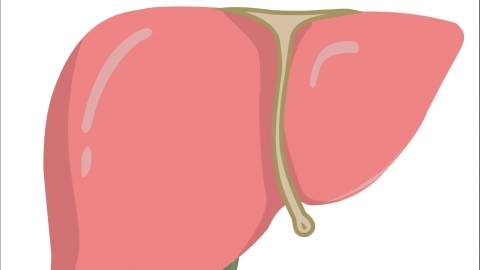How to regulate poor liver and gallbladder function
Poor liver and gallbladder function may be caused by various factors including unhealthy lifestyle habits, dietary overload, cholelithiasis, cholecystitis, pancreatitis, and intrahepatic cholangiocarcinoma. It can usually be managed comprehensively through lifestyle adjustments, dietary improvements, medication, and other treatments. A detailed analysis is as follows:

1. Unhealthy lifestyle habits: Long-term late nights, irregular作息 (作息 should be translated as作息 here, but since it's repeated in the original text and seems to be a placeholder or error, it's omitted in translation), lack of exercise, and other unhealthy lifestyle habits can lead to a decline in bodily functions and affect normal liver function, thereby causing impaired liver and gallbladder function. It is recommended to adjust sleep schedules, ensure adequate sleep, avoid staying up late, and engage in appropriate physical activities such as walking or yoga to promote metabolism and blood circulation.
2. Dietary overload: Excessive consumption of greasy, spicy, or irritating foods, as well as foods high in sugar and fat, can overload the liver, leading to dysfunction of the liver and gallbladder and consequently impaired function. It is recommended to improve dietary habits by reducing the intake of these foods and increasing consumption of vegetables, fruits, and other foods rich in fiber and vitamins, maintaining a light and balanced diet.
3. Cholelithiasis: Gallstones can block the bile ducts, causing bile duct obstruction and preventing bile from being excreted normally, thereby leading to impaired liver and gallbladder function. It may be accompanied by symptoms such as right upper quadrant abdominal pain, jaundice, nausea, and others. Treatment options depend on the size and location of the stones and may include surgical removal or extracorporeal shock wave lithotripsy.
4. Cholecystitis: Cholecystitis can cause obstruction of the bile ducts, especially when accompanied by gallstones, making impaired liver and gallbladder function more likely. Associated symptoms may include right upper quadrant abdominal pain, fever, chills, and others. Medications such as atropine sulfate tablets, racemic anisodamine tablets, and phloroglucinol injection may be used under medical guidance to control the condition. Attention to dietary management, rest, and, if necessary, surgical treatment are also recommended.
5. Pancreatitis: Inflammation of the pancreas may increase pressure in the surrounding bile ducts, leading to bile duct obstruction. Associated symptoms may include left upper quadrant abdominal pain, nausea, vomiting, and others. It is recommended to follow medical advice for treatment with medications such as octreotide acetate injection, pancreatin enteric-coated capsules, and famotidine tablets. Dietary management, rest, and, if necessary, surgical treatment are also advised.
Patients should maintain good lifestyle habits and healthy dietary practices in daily life, actively adjusting their physical condition to enhance the effectiveness of disease treatment.






